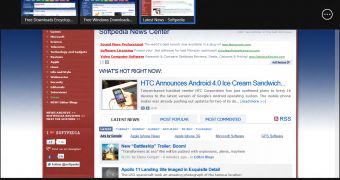Internet Explorer 10 is installed by default on Windows 8 and Windows RT devices and it also offers a Metro-based version that tries to make the most of the new Modern UI.
While IE10 fully supports Flash pages, it used to load only websites approved by Microsoft, relying on a white list that was constantly updated by the Redmond-based technology company. Even though several workarounds have been developed to quickly add new websites to this white list, there’s no doubt it was a major setback for beginners.
However, starting today, all Flash websites are turned on by default in Internet Explorer 10 running on Windows 8 and Windows RT, as the company discovered that “the vast majority of sites with Flash content are now compatible with the Windows experience for touch, performance and battery life.”
Microsoft will roll out a platform update as part of its Patch Tuesday cycle to implement the change and make all Flash websites load on Windows 8 and Windows RT devices unless they’re included in a black list.
The whole concept is very simple: Microsoft will use a separate list to block pages that could slow down your Windows 8 device, and the new strategy pretty much makes sense. Why block all Flash websites when you can simply restrict access to those that may affect the browsing experience?
“This updates the immersive IE experience on Windows 8, and both the immersive and desktop IE experiences on Windows RT. The update will be made available to customers with Windows Update. The curated CV list applies to IE on the desktop for Windows RT since the most common reason to block Flash is that the site relies on other plug-ins that are not available on Windows RT,” Microsoft explained.
As usual, the patch will be delivered through the integrated Windows Update option, so you won’t need to manually deploy it, regardless of whether you’re using Windows 8 or Windows RT.

 14 DAY TRIAL //
14 DAY TRIAL //